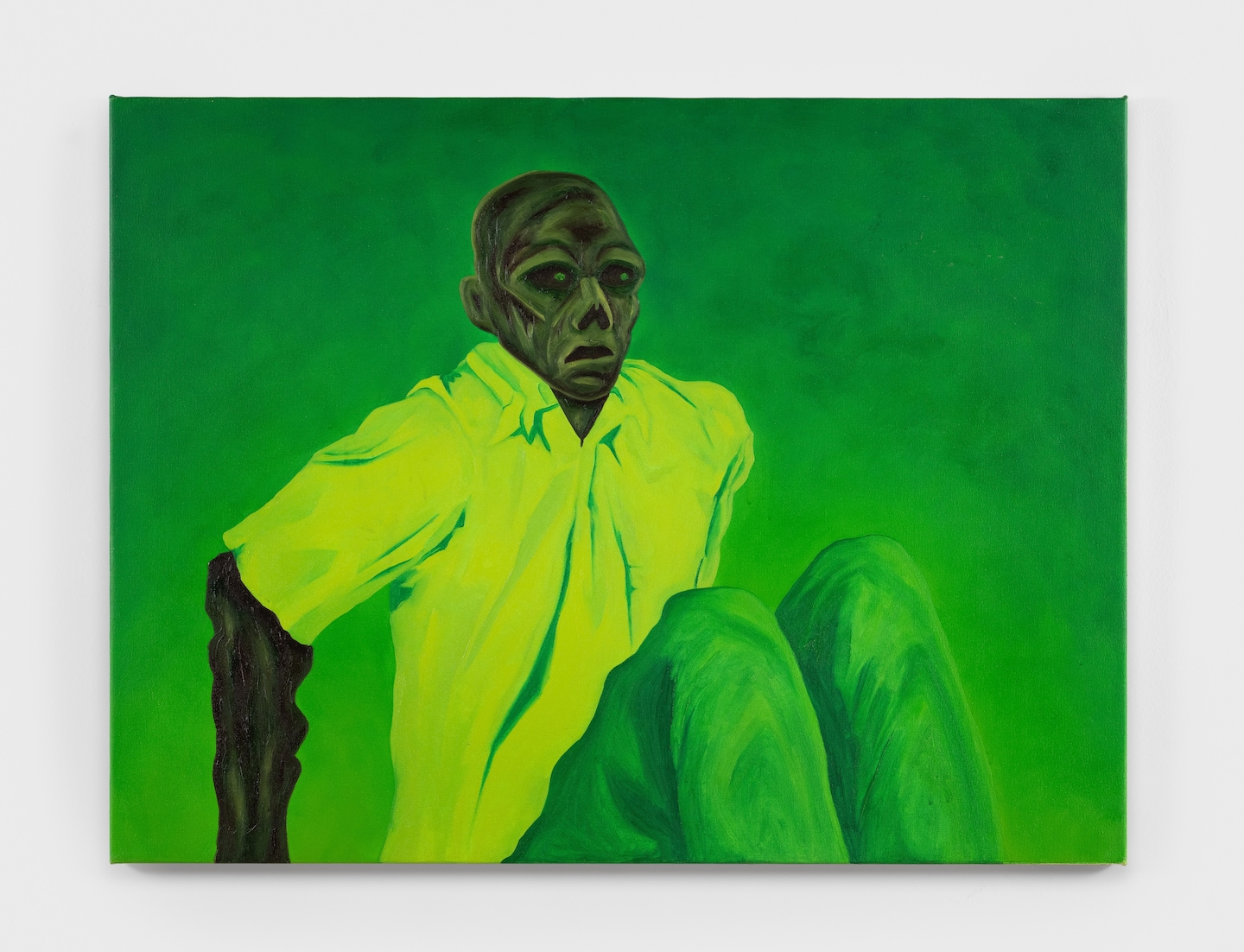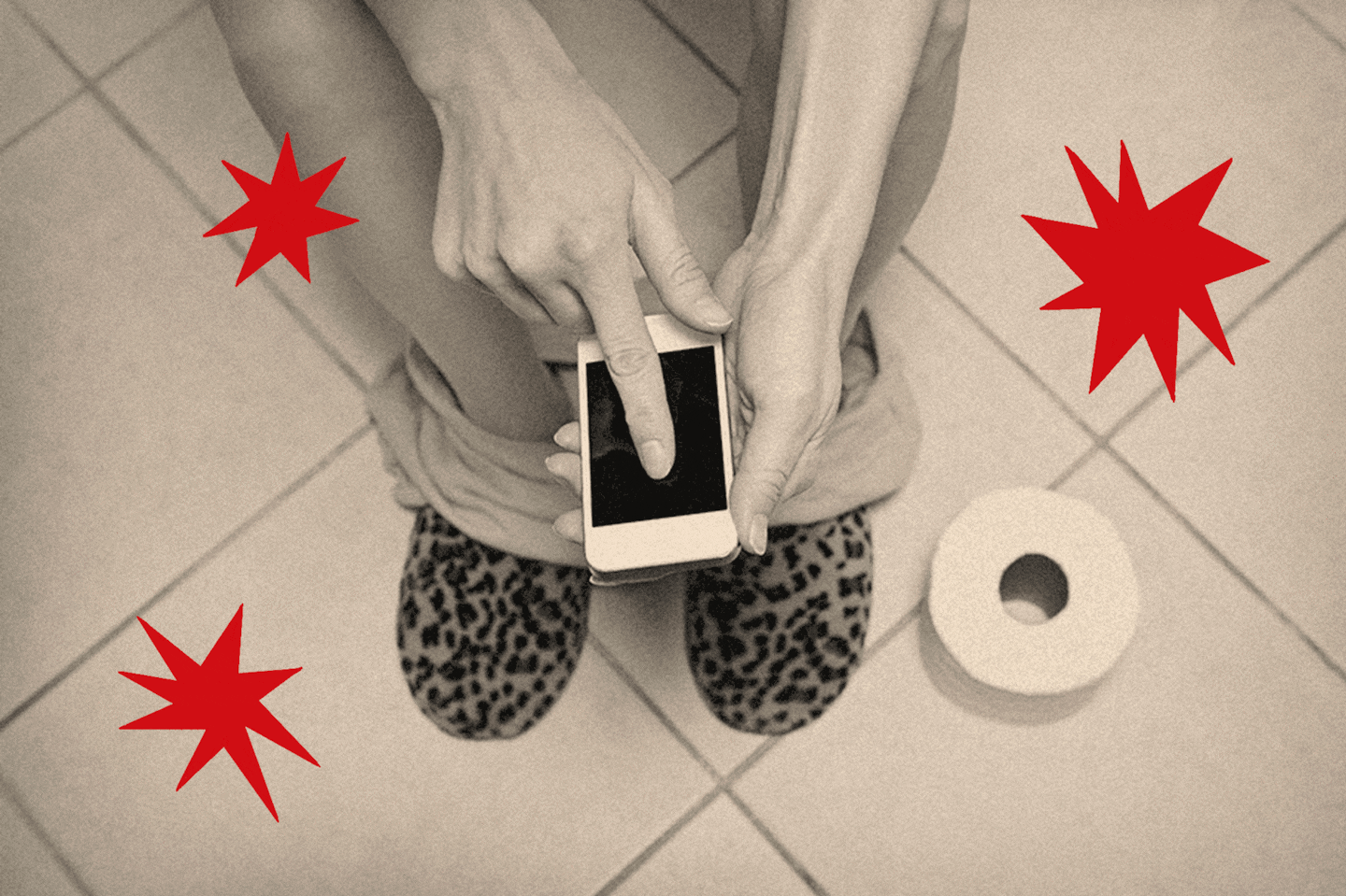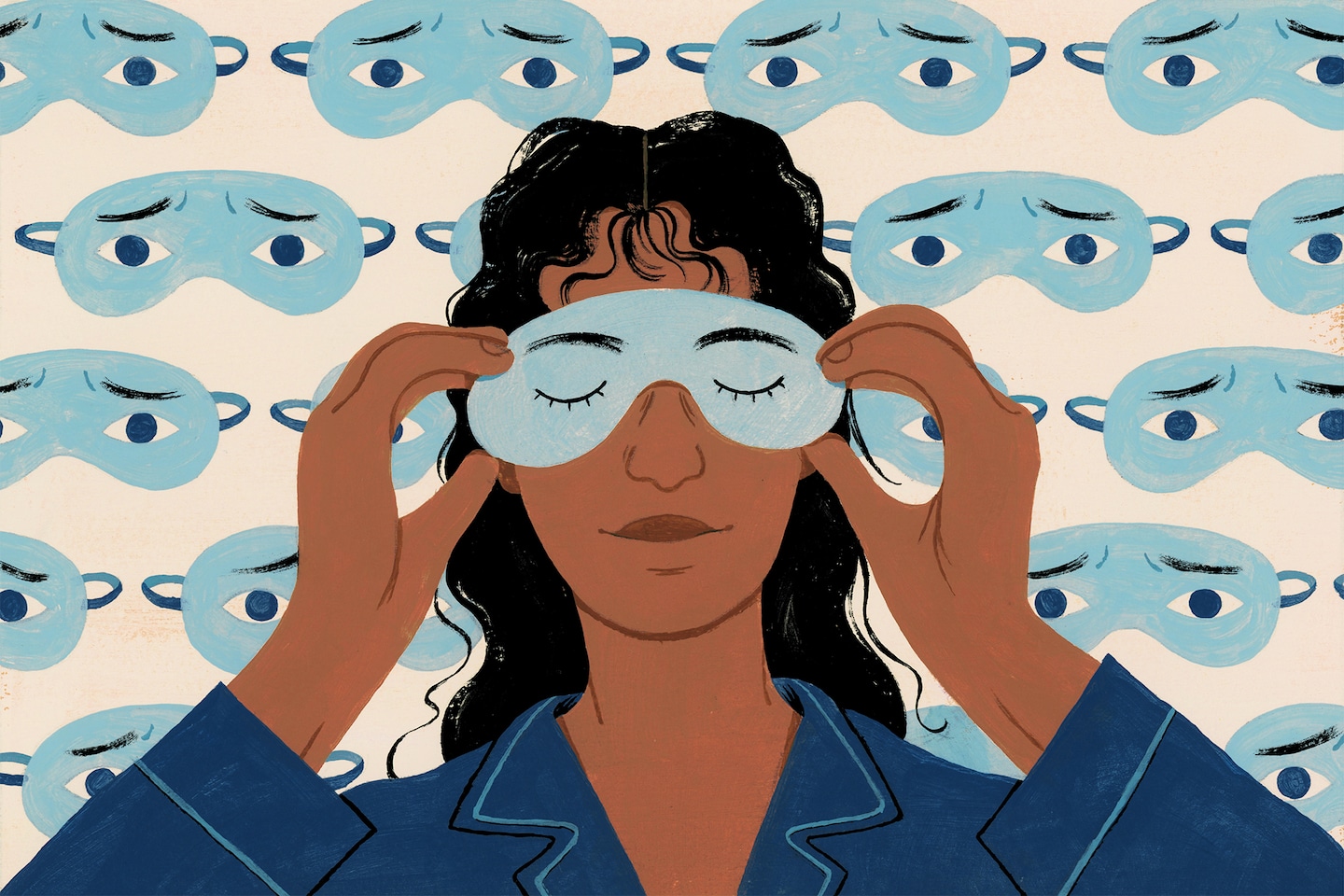
Ideas have come back from the dead before, but the new “zombie formalists,” as critic Walter Robinson put it, flooded the art market with undead Jackson Pollocks and Frank Stellas.
Buyers loved the zombies: Between 2014 and 2018, one millennial painter, Tauba Auerbach, sold nearly $16 million in abstract works, according to Artnet. But the fever soon broke, and the apocalypse subsided. In the years since, galleries and collectors — and artists — have done an about-face, returning to warm-blooded figurative painting. So much so, in fact, that critics have warned of a rise of “zombie figuration.”
That recent history might help to explain why Thebe Phetogo has painted a toxic ghoul feasting on the brains of a figure. And not just any poor schmuck, but a figure done in the style of artist Kerry James Marshall, one of the most celebrated painters working today.
With his man-shaped moths, creepy paper dolls and nuclear-waste palette, Phetogo is diving headfirst into a bleeding-edge debate about the state of play in contemporary painting. For “8 Propositions for the Origin of a Blackbody,” the Botswana-based artist’s solo show at Von Ammon Co., Phetogo has assembled a body of works that reads like an essay — however cryptically — on portraiture, race, criticism and the construction of images. And zombies.
Consider “Proposition 1 — Autogenia, Painting 4” (2023). The painting depicts a figure in a studio sculpting an enormous eyeball. Everything but the orb is painted in green, reminiscent of a green screen used to mask backgrounds in film (although a more sickly color). Phetogo’s thick eyeball is both subject and viewer, rendered in full color to give it agency yet still trapped in the audience’s gaze. The title suggests the uncertainty of a hypothesis: a painting in the works.
For “Proposition 2 — Material Need and Practical Effects, Painting 3” and “Painting 4” (both 2023), Phetogo creates a backdrop of green checkerboard. It’s a clever feint, both abstract and representational, a reference to the transparency grid in Photoshop. Both paintings feature paper dolls: One is a thermal image of a body (“Painting 3”), the other a figure painted with shoe polish (“Painting 4”) — yet another film reference, this time to blackface. Viewers are encouraged to remove the paper dolls from these canvases, revealing a wan afterimage of the figure beneath.
The artist’s overarching interest in the depiction of Blackness — touching on, for example, the historical differences between the use of blackface in African “concert parties” and American minstrel shows — is evident even in his titles: A “blackbody” is a concept in physics for a hypothetical object whose surface absorbs all radiation.
Black artists come up a lot in the discourse about zombie figuration, since Black artists feature more prominently in today’s art market than even just a decade ago, among painters in particular. In “Proposition 5 — Zombie Figuration, Painting 6,” Phetogo cites Marshall explicitly: The figure being brained could be cut and pasted from one of Marshall’s paintings. It’s a bold gesture; while Phetogo paints in a style that some might describe as deskilled or “bad painting,” he shows he can confidently mimic Marshall’s expressionistic figures, even drawing on his darker depictions of minstrelsy. Phetogo may be defending Marshall and others against critics’ cries of zombification, but the gesture is double-edged. It can’t be wholly flattering to see your style devoured.
Without a library card, some viewers might get lost in the heady traffic of Phetogo’s ideas. The insectoid figure in “Proposition 3 — Indicator Species, Painting 4” (2023) doesn’t give up much, for example. The title is a nod to another scientific concept, evolution’s indicator species, such as the peppered moth that evolved to be darker to blend in with the soot of the Industrial Revolution. But moreover, Phetogo’s painting is plainly ridiculous: a lemon-lime moth-man, silent and stupid, daring the viewer to take it seriously. Should we be laughing instead?
Creepy, austere, at times unnerving and certainly provocative, Phetogo is striving for something like vindication. To wield a color like puke green so confidently might be a sign of Phetogo’s affinity for Georg Baselitz and Martin Kippenberger, avatars of ugly painting. But Phetogo’s cerebral works can still yield moments of fleeting pleasure, like how he combines recessive greens with urgent reds yet flips how these colors normally read. Bad painting is always harder than it looks to pull off. And his works are dumb-funny: “Proposition 4 — Cosmic Gunk, Painting 3,” a thermal image scan of a woman’s torso, adds eyes where the nipples might fall, as if to say, hey, buddy, my eyes are down here.
There’s always someone waiting in the wings to declare painting dead. That diagnosis is especially pointed now, with a figurative renaissance led by so many artists of color, and a market eager to cash in on work about identity. Phetogo hasn’t settled the debate, but that’s hardly the point. He’s devised a process for figuration, an approach to painting all his own, a vaccine for the zombie crisis.
8 Propositions for the Origin of a Blackbody
Von Ammon Co., 3330 Cady’s Alley NW. vonammon.co. 202-893-9797.






